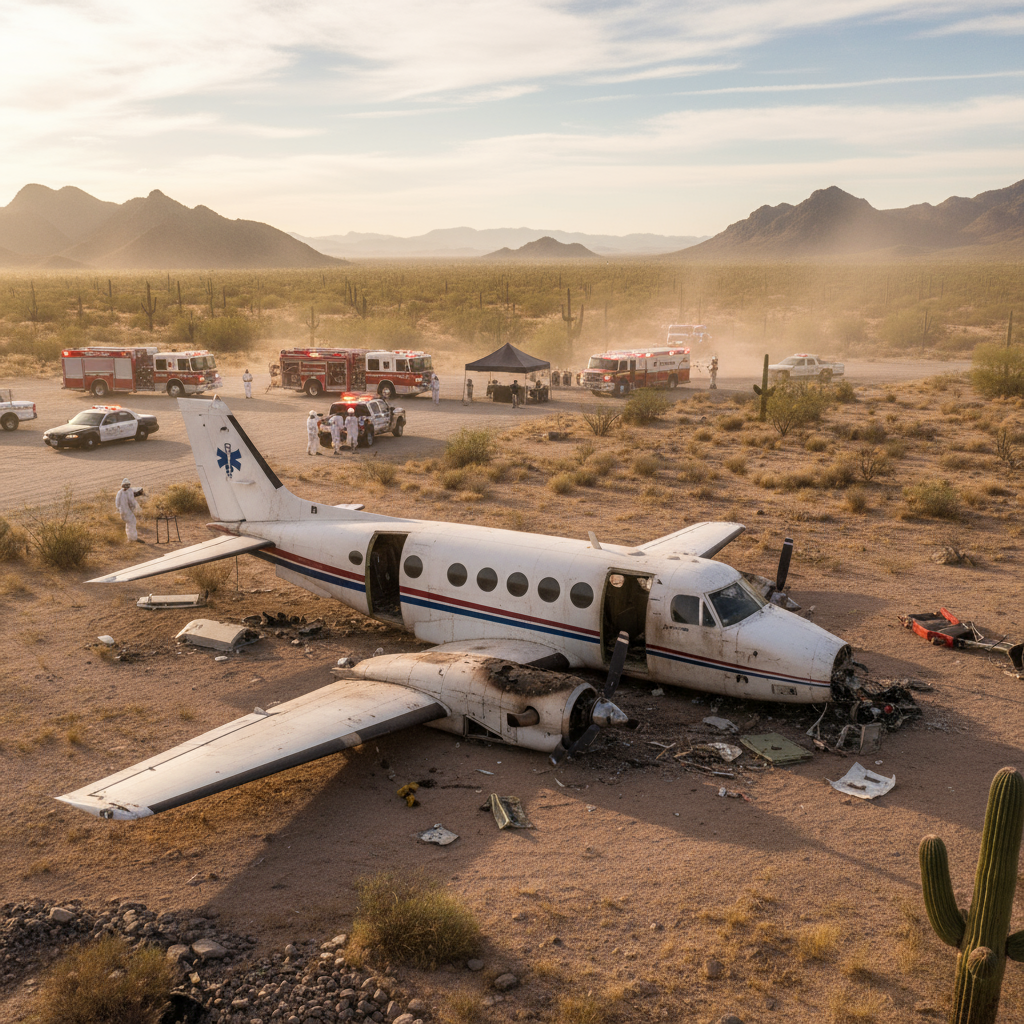Physical Address
304 North Cardinal St.
Dorchester Center, MA 02124
Physical Address
304 North Cardinal St.
Dorchester Center, MA 02124
Global aviation news tracker
Global aviation news tracker

King Air 300 accident: a Beechcraft King Air 300 air ambulance was destroyed in Chinle, Arizona on August 5, 2025.
The incident on August 5, 2025, left a regional medevac aircraft beyond repair and disrupted local patient-transfer capacity while investigators begin a methodical examination of what happened. Early statements say there are few immediate clues; recovery teams and accident examiners are documenting wreckage and preserving evidence at the scene.
Separately, investigators are also reviewing a Cessna Citation CJ4 overrun in which the pilot reported no braking action. Details on that event’s time and location were not released in the preliminary summary. Both occurrences are part of a cluster of recent business-aviation safety probes drawing attention to operational risks in non-airline flying.
Officials have started standard lines of inquiry: airframe and engine condition, maintenance records, pilot qualifications and recent duty history, runway and surface reports, and available flight data or cockpit voice recordings. Weather, dispatch communications and any on-board medical equipment that could affect weight or balance will also be reviewed. At this stage, investigators emphasize caution and say it will take time to establish probable cause.
The loss of an air ambulance has immediate operational consequences for remote areas that depend on medevac flights for critical transfers. Operators and local health services may face short-term gaps while aircraft are re-routed or replacement capacity is arranged. Industry observers say these events are reminders of the unique safety environment for business and special-mission flights, which often operate from shorter runways and varied conditions compared with commercial airlines.
Readers should expect updates as investigators release factual findings. The next stages typically include on-scene reporting, laboratory examination of recovered components, and a formal investigative timeline that could take months to complete.